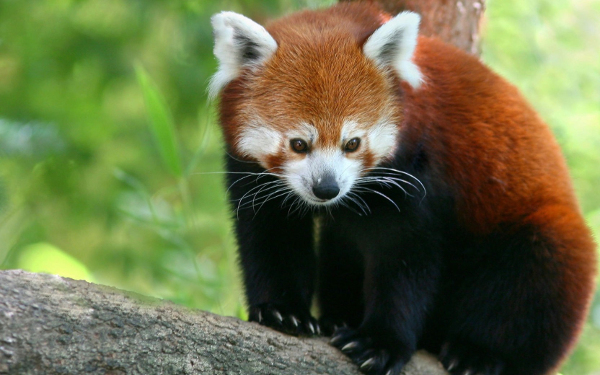Hyderabad: City-based genetic researchers from Centre for Cellular and Molecular Biology (CCMB) have successfully completed the genetic diversity assessment of Red Panda (Ailurus fulgens), the elusive mammal of the Himalayan region, which is classified as endangered in the IUCN (International Union for Conservation of Nature) Red List.
The wild population of Red Panda is estimated at fewer than 10,000 mature individuals and their numbers in the wild continue to decline due to large scale hunting, trapping, fragmentation, habitat destruction and inbreeding depression. Conservation of Red Panda is also important because this is only surviving member species in the family Ailuridae.
The CCMB researchers have worked closely with conservation specialists of Padmaja Naidu Himalayan Zoological Park in Darjeeling and Himalayan Zoological Park, Gangtok, to assess the genetic diversity of captive bred Red Panda. The genetic specialists from Hyderabad are part of the Red Panda Conservation Breeding Project at Darjeeling Zoological Park, which is widely regarded as the one of the most successful and only breeding programme of Red Pandas in their natural distribution zone.
In a paper on ‘Genetic Diversity Assessment of Captive Red Panda Population in India’, which was recently presented in an international conference on wildlife conservation, the researchers said that the ultimate goal of ex-situ conservation (which means protective breeding of endangered species outside it’s natural habitat i.e. in a zoo) is re-introduction of Red Panda into their wild habitat, much like the Mouse Deer conservation initiative in Nehru Zoological Park in Hyderabad.
During captive breeding of Red Panda, it was essential that 90 per cent of the genetic diversity of the species is maintained. ‘Genetic diversity is essential for the long-term survival of the species since it is the basis for adaptation and evolution, mainly when environmental conditions change,’ the CCMB researchers in their paper said.
Who are Red Panda?
Red Panda are elusive Himalayan bear-like species, slightly larger than a domestic cat and are found in Sikkim, western Arunachal Pradesh, Darjeeling and parts of Meghalaya. They are arboreal, skilfully move within the tree canopy and use their ringed tails for balance as well as a wraparound blanket. They are shy and solitary animals, except when they are trying to attract a mate.
Genome DNA was isolated from blood and faecal samples of these captive animals. The resultant data was analysed for genetic diversity of the population, heterozygosity levels in individual animals, identification of mother-offspring and sibling pairs and for population viability analysis based on genetic diversity, CCMB researchers said.
Such studies play important role in assessing genetic fitness of the captive populations, their fitness for release into the wild and perhaps also to track their contribution to the wild populations in the future. The Red Panda genetic study was conducted by Ayu Singh, Arun Kumar, Nisha Nandhini and P Anuradha Reddy from CCMB.
Source: TT
Image Courtesy: Flipcart
You may also like
-
New Heat-Based Approach To Cancer Treatment Can Reduce Chemotherapy Doses
-
Scientists Take A Major Step Towards Unification Of Classical & Quantum Gravity
-
India Graphene Engineering and Innovation Centre (IGEIC) Under the Vision of Viksit Bharat@2047 Launched
-
New High-Performance Gas Sensor can Monitor Low Level Nitrogen Oxides Pollution
-
Antidepressant Drug can be Repurposed for Treating Breast Cancer
